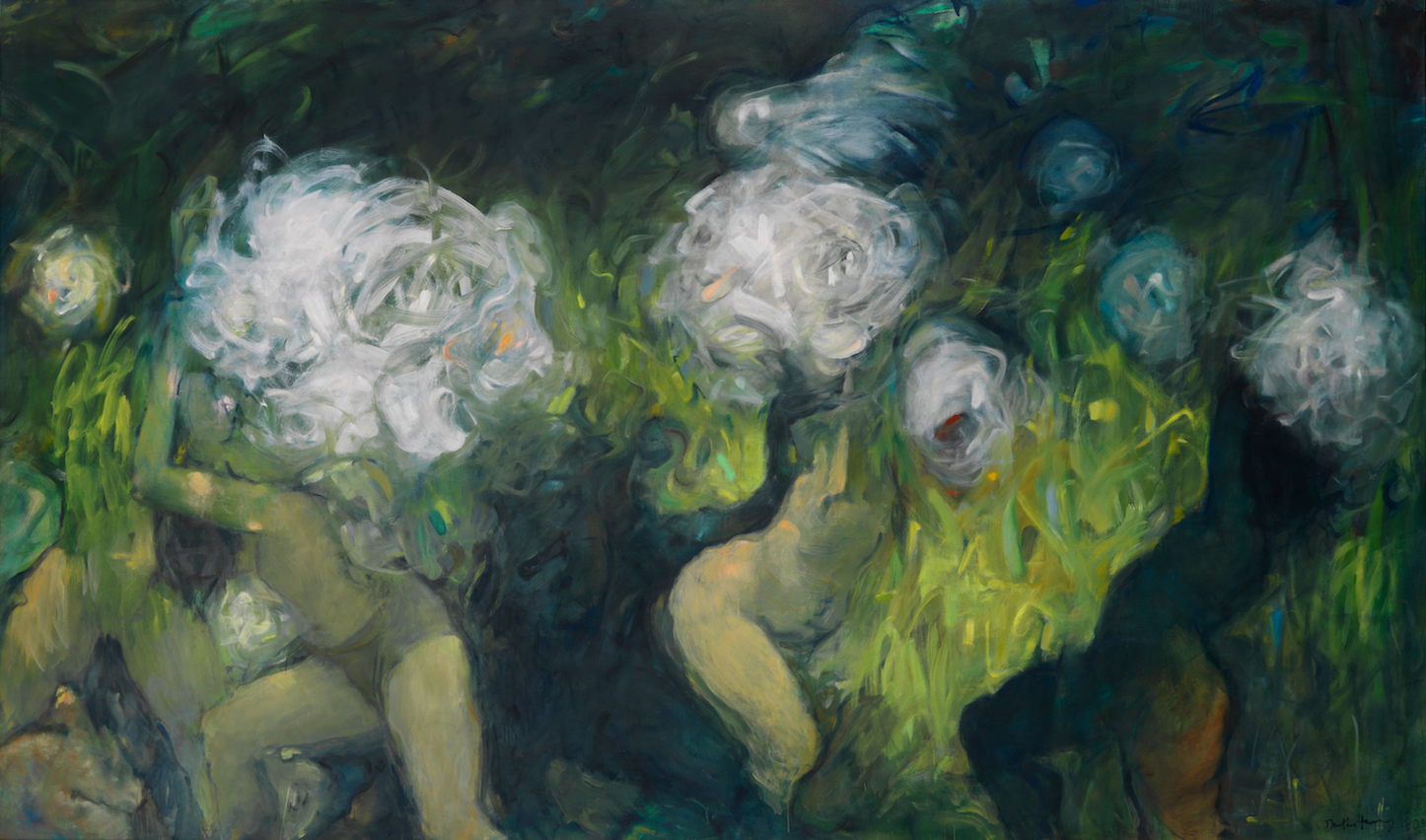About this work
1987
Oil on canvas
77 1/2 x 130 in.
In her own words...
Somewhere around 1962 or 1963, in Paris, I was intrigued by a reproduction in one of those obscure art catalogues of a painting showing a field of flowers. The artist was, at least for me, as obscure as the catalogue, but there was something about the loving way he had painted his mostly white flowers that made me feel he had lived a passionate and noble life, probably caring not at all about what the rest of his art world was doing or thinking. I cut out the picture and every now and then I looked at the white flowers, which began to take on larger and, above all, profounder implications. They grew before my eyes, they swam in an unearthly tourbillion of total enigma. Though still heartbreakingly flowerlike to my gaze, they were showing signs of power, the power to anaesthetize and to invent other ways of living.
One day, exasperated by the way the little clipping was getting in the way of other work, I painted a very small canvas with flowers. Except that they were not really flowers at all but white shapes that I can only describe as forces. And as they spread across the canvas they dragged under themselves not stems, not leaves, but pale human figures. Masters or slaves might have come to mind in the welter of interpretations I would try to apply to my picture. But I saw that such a view was hopelessly simple and offhand. And having by that time painted my flowers it seemed to me that the whole experience with all its meanders was closed, and its menace—oh, yes—somehow exorcised. The picture rather soon found a home and I never saw it again.
But twenty-two years later, and in New York, those white visions were still haunting me. They were moreover getting all mixed up with my immersion, indulged in over the years, in such ancient esoterica as legendary islands of death or paradise (same thing) during what the French so nicely call la nuit des temps. I began in 1984 to paint on a large canvas, in greens and whites, something I felt about those spirits, which may have been flowers but also novas, tears, omens, God knows what, contending or conniving with our own ancestral shape in a place I'd give anything to know. During the painting of the picture, a matter of three years, it went through a number of transformations. At times I thought it was finished, that I had done what I could. Once it was even photographed, friends gazed at it, a turbulent image from a feverish brush. And then it was attacked again, radically changed, its white icons whiter, its human reference clearer. Late in 1987 it was finished.
–unpublished statement, 1995, an excerpt of which was published in Bailly, Jean Cristophe, "Image Redux: The Art of Dorothea Tanning," Dorothea Tanning. New York: George Braziller, 1995, p. 47.


